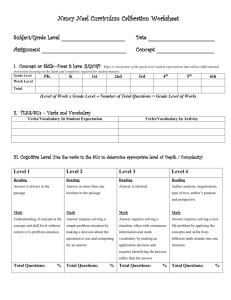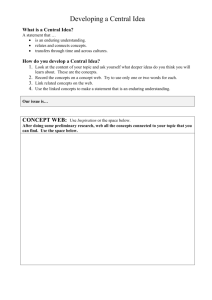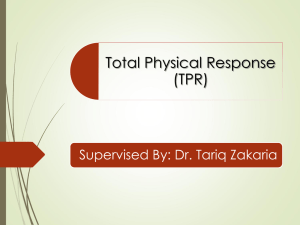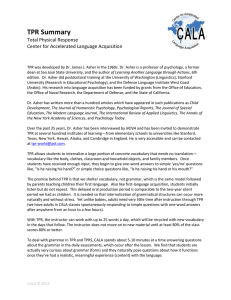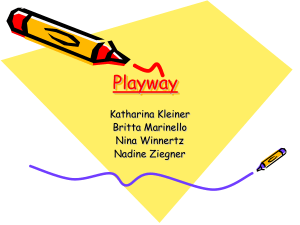French Program Overview - Prince William Academy
advertisement
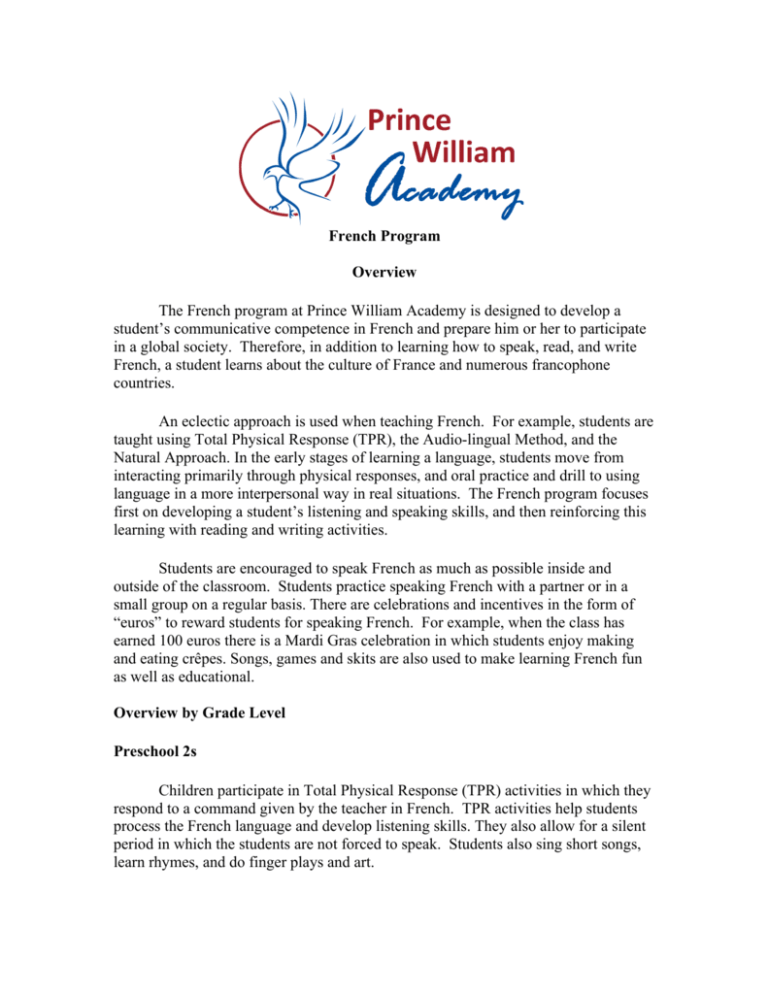
French Program Overview The French program at Prince William Academy is designed to develop a student’s communicative competence in French and prepare him or her to participate in a global society. Therefore, in addition to learning how to speak, read, and write French, a student learns about the culture of France and numerous francophone countries. An eclectic approach is used when teaching French. For example, students are taught using Total Physical Response (TPR), the Audio-lingual Method, and the Natural Approach. In the early stages of learning a language, students move from interacting primarily through physical responses, and oral practice and drill to using language in a more interpersonal way in real situations. The French program focuses first on developing a student’s listening and speaking skills, and then reinforcing this learning with reading and writing activities. Students are encouraged to speak French as much as possible inside and outside of the classroom. Students practice speaking French with a partner or in a small group on a regular basis. There are celebrations and incentives in the form of “euros” to reward students for speaking French. For example, when the class has earned 100 euros there is a Mardi Gras celebration in which students enjoy making and eating crêpes. Songs, games and skits are also used to make learning French fun as well as educational. Overview by Grade Level Preschool 2s Children participate in Total Physical Response (TPR) activities in which they respond to a command given by the teacher in French. TPR activities help students process the French language and develop listening skills. They also allow for a silent period in which the students are not forced to speak. Students also sing short songs, learn rhymes, and do finger plays and art. Preschool 3s Children continue to perform TPR activities. In addition, they begin to learn the French alphabet and sing the alphabet song in French. They also learn other songs, simple poetry, and brief greetings and leave-takings in French. Junior Kindergarten Students learn words and phrases for common greetings and everyday expressions. They also associate the visual representation of objects with written words. Students learn to count in French as well as learn new French vocabulary such as colors, days of the week, and weather expressions. Some of this new vocabulary is learned through song and art. Kindergarten In Kindergarten, students build the foundation of pronunciation. They write letters and words already learned orally. In addition, they identify numbers in French as well as classroom objects. Students learn cultural aspects, including art and dance. They learn how to say how old they are and identify animals in French. First Grade Students provide basic personal information and answer simple questions. They also learn various aspects of French culture, such as holidays and food. Students memorize short dialogues, and learn to read and write simple texts. Second Grade Students recognize differences between formal and informal words, such as the “you”/”vous” when speaking to adults and “you”/”tu” when speaking to other children. They provide simple descriptions using adjectives and learn about masculine and feminine words. Students count in French and learn infinitive verbs. They learn new vocabulary, including objects, shapes, and additional numbers. Third Grade Students learn additional greetings and how to introduce friends and family members to others. They participate in conversations about everyday activities, including those about the home and school. In addition, they learn present tense verb use and subject-verb agreement. Fourth Grade Students increase their knowledge of singular, plural, masculine and feminine words. They also expand their cultural awareness through study of French traditions, fables, and geography. In addition, students engage in simple dialogue. Fifth Grade Students make introductions and ask for and give information. Grammatical topics covered include irregular verbs, and definite and indefinite words. Students are able to make requests and describe things, and learn how to agree and disagree and use the French “si” instead of “oui” to contradict a negative statement. Sixth Grade Grammatical topics include compound verbs, prepositions, demonstratives, possessive pronouns, and direct objects. Students make, accept, and turn down suggestions. They learn how to make excuses as well as recommendations. In addition, they extend and respond to invitations. Seventh Grade Students study new vocabulary including verbs, prepositions and pronouns. In addition, they learn more complex dialogue and idioms. Students also learn to ask for, give and refuse permission. Students ask for and express opinions as well as inquire about and relate past events. Eighth Grade Students engage in conversational French and make oral presentations using computer technology. They write about a topic in paragraphs using proper grammar. In addition, students engage in discussions of cultural differences. They learn how to inquire about and share future plans and express indecision.




